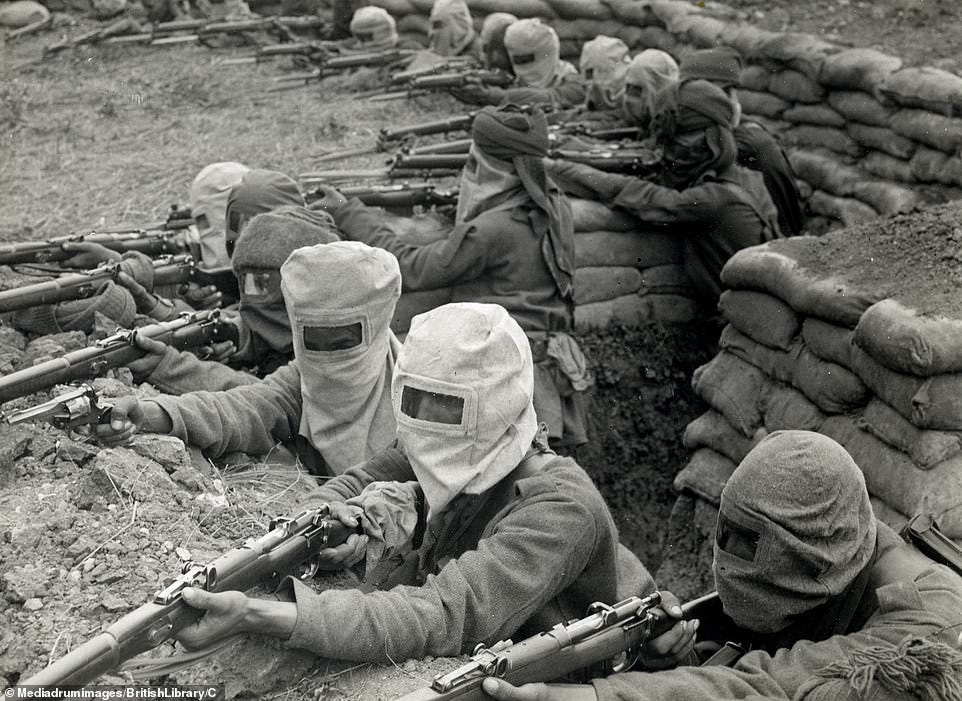Decolonizing Narratives of South Asian Soldiers in the World Wars
Words by Sonia Gulzeb Abbasi
Welcome to the Brown History Newsletter. If you’re enjoying this labor of love, please do consider becoming a paid subscriber. Your contribution would help pay the writers and illustrators and support this weekly publication. If you like to submit a writing piece, please send me a pitch by email at brownhistory1947@gmail.com.
Don’t forget to check out our SHOP and our Podcast.

Decolonizing Narratives of South Asian Soldiers in the World Wars
In 1849, French writer Jean-Baptiste Alphonse Karr wrote, “plus ça change, plus c'est la même chose,” which means “the more things change, the more they stay the same.”
Few days ago, I went to see a newly curated South Asian Gallery at Manchester Museum.
It is a joint collaboration between The British Museum and Manchester Museum which opened to the public in Feb' 2023. At the entrance, you are greeted by a screen displaying flickering images, bearing the words 'South Asia Gallery' in Urdu, English, and Hindi. The space is embellished with a collection of images representing Mughal and Indian art. One of the first pictures that immediately captured my attention was the one depicting Queen Victoria with the Koh-e-Noor diamond. It's difficult to put into words, but the sight of the Koh-e-Noor Diamond made me reflect on the words of Jean-Baptiste. Almost, as if the Queen was mocking us, her colonized subjects, with a message that things haven't really changed.

There are six themes in the gallery – ‘Past and Present’, ‘Movement & Empire’, ‘Lived Environments’, ‘Innovation & Language’, ‘Sound, Music and Dance,’ and ‘British Asian Identities.’ I explored all the themes with deep curiosity, hoping to come across an image or story that would convey one of the many traumatic events from South Asia's colonial history.
For context, when Britain arrived on India’s shores, India’s share of the world economy was 23 percent. By the time the British left, it was down to below 4 percent. Britain’s rise, for two hundred years, was financed by its depredations in India. In fact Britain’s industrial revolution was actually premised upon the deindustrialization of India.
There it is, I found an image which reads word ‘exploitation’ and the description was as follows;



